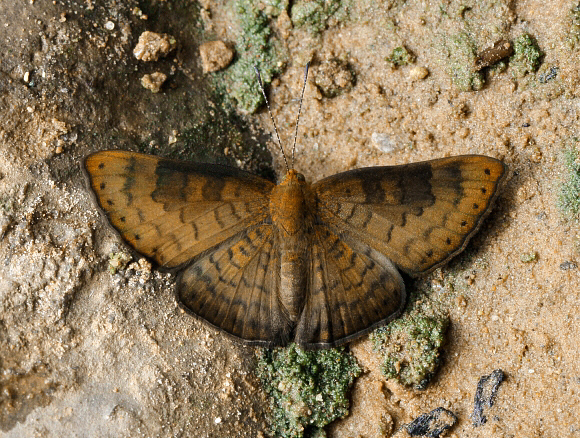 Emesis temesa peruviana, male, Satipo, Peru – Adrian Hoskins
Emesis temesa peruviana, male, Satipo, Peru – Adrian Hoskins
Introduction
There are 41 species in the genus Emesis, all confined to the neotropical region. Most are brownish in colour, marked with a pattern of short wavy lines. Several of the species can be quite difficult to tell apart, requiring close examination of the markings.
Emesis temesa is a common species in Peru, Brazil and Ecuador, but is often overlooked due to it’s small size and sombre colouring.
Habitats
This species is found in primary rainforest and transitional cloudforest habitats, at altitudes between about 200-1000m.
Lifecycle
I have no information specific to temesa. The eggs of Emesis species are typically white and highly sculptured. They are laid singly or in clusters of up to 30, according to species. The known larval foodplants encompass the families Ranunculaceae, Euphorbiaceae, Rhizophoraceae, Sterculiaceae, Anacardiaceae and Nyctaginaceae.
Adult behaviour
Males are usually encountered singly, invariably when imbibing moisture from damp sand, peccary wallows, and sunlit forest tracks. They are only active in hot sunny conditions.

Emesis temesa peruviana, male, Satipo, Peru – Adrian Hoskins
